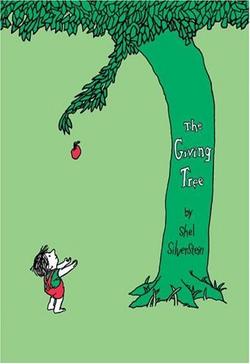What To Do When Your Tree Is Dying
 Have you ever heard of the children’s book, The Giving Tree by Shel Silverstein? It’s a story about a tree that gives a boy everything it has, such as apples, wood and shade, to make him happy throughout his life.
Have you ever heard of the children’s book, The Giving Tree by Shel Silverstein? It’s a story about a tree that gives a boy everything it has, such as apples, wood and shade, to make him happy throughout his life.
Every tree is a giving tree, isn’t it? Trees are wind obstructors, fresh air makers, pollutant reducers, shade producers, and block us from the cold. Trees entertain kids for hours with tree houses and swings. Trees let us relax with a hammock and a good book. One of the best parts about trees is they only require a little maintenance and care in return.
But what happens when your tree looks a little down in the dumps? An undiagnosed sick tree could kill your other surrounding trees, leaving your yard treeless. It could also fall, which can harm you and your property. Therefore, it is crucial to keep an eye on your tree to be aware of any symptoms that point to it being unhealthy.
Symptoms of a Sick or Dying Tree
There are several common symptoms of sickness that you can watch out for to determine if your tree needs help. Then, it's all a matter of diagnosing and taking action! A few common warning signs are listed below:
- Poor structure
Sometimes trees can lean more to one side, or have an odd shape that is caused by an unnatural growth pattern. Severe storms and poor pruning are usually to blame for this; rectify this issue soon to prevent the tree from falling!
- Decay
This one can be hard to spot, as decay usually affect the inside of the tree first. Visible symptoms include: mushroom-like spores, an expanded base, dead branches, and soft, breakable wood.
- Weak unions or joints
These are also an indicator that your tree is sickly. If your tree’s branches don’t look very attached to the tree, there is a problem. This is caused by branches growing close together with bark in between. Weak branches mean they could fall at any time.
- Cracks
Cracks in your tree are tricky to diagnose because some are normal and some are not. Overall, the cracks don’t necessarily hurt the tree unless they become too deep and affect the tree’s infrastructure and branches, or if they host detrimental pests.
- Cankers
Cankers are areas of dead bark on your tree. A canker is similar to a human canker sore; both are painful sores from a disease caused by stress. A tree canker is caused by bacteria/fungi that infect a tree through an open wound. Once it’s inside, it attacks the tree and causes it stress, and in turn, a canker. Fortunately, these can usually be pruned off the tree.
- Deadwood
The last symptom of a sick or dying tree is deadwood. Deadwood is exactly what it sounds like; wood that is dead. The branches are usually easy to break and are dry.
All of these symptoms are warnings that your tree's health is threatened. The faster you identify these indications, the faster your tree can get back to normal.
Disease Prevention
So now that you're familiar with some of the common illnesses and symptoms, what about actually saving the tree? Prevention is key.
There are certain things you can do to boost your tree's health so it won’t get sick in the first place.
- Avoid injuring your tree while doing any yard work. Wounds on trees are like open cuts to humans; they can easily catch an infection.
- Watch out for any exposed roots, too, since root rot can be lethal.
- Take care of your tree’s basic needs. If you have mulch around your tree, leave some room around it so it can breathe and absorb things.
- Keep an eye on the weather. If you have been in a drought, your trees will need some watering.
- Properly prune your tree. A pruned tree is a happy and healthy tree because it allows for proper growth and a strong immune system.
Arborists Are Your Friend
If prevention fails and your tree becomes sick, the best thing to do is to consult your local tree doctor, a.k.a., an arborist. They are certified experts that promote tree growth.
What an arborist can help you with:
- Identify at-risk trees
- Know the laws about chemicals and deforestation
- Properly spray trees with chemicals
- Alert you about any spreading diseases
- Brace your trees for support
- Recommend trees that would work well with your yard
- Identify valuable trees you can sell
- Give you pruning tips
- Remove your tree
- Climb up high
- Use heavy equipment
An arborist will do all of the dangerous things for you to keep you and your home safe. So no rickety ladders for you! If there is any way to save your tree, an arborist will know and will be able to help. If you have any questions about your trees or see any of the symptoms listed above, give back to your tree and call an arborist in your neighborhood today.
About the Author
 Chelsea Hennen is an avid writer and researcher of tree care and landscaping. She has written informational articles and guest blog posts for a variety of industries, including legal guidance, home improvement and corporate planning. She is a guest writer for Precision Landscape and Tree, a company that serves the Twin Cities metro area with over 30 years of experience in tree care, timber management, and land removal.
Chelsea Hennen is an avid writer and researcher of tree care and landscaping. She has written informational articles and guest blog posts for a variety of industries, including legal guidance, home improvement and corporate planning. She is a guest writer for Precision Landscape and Tree, a company that serves the Twin Cities metro area with over 30 years of experience in tree care, timber management, and land removal.